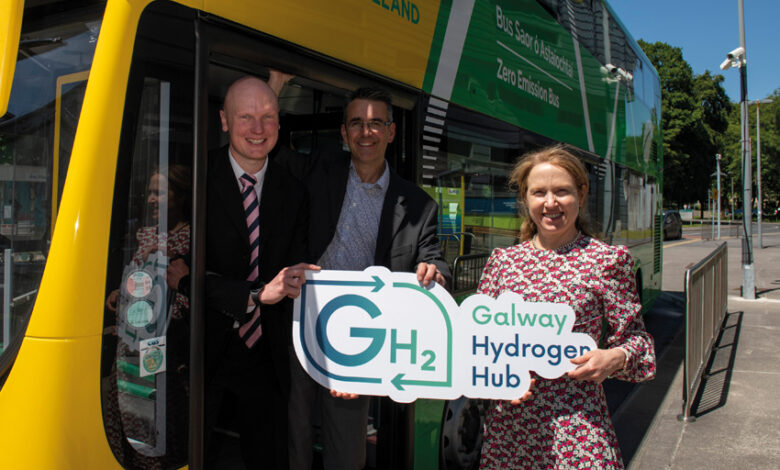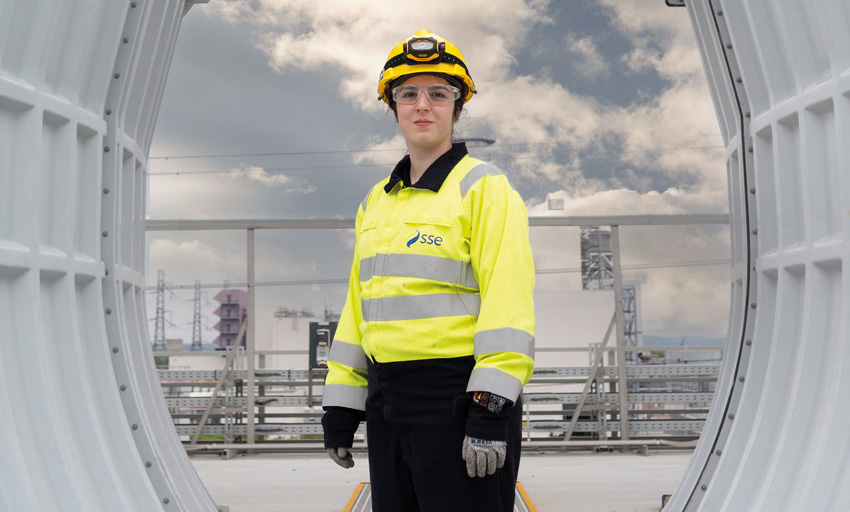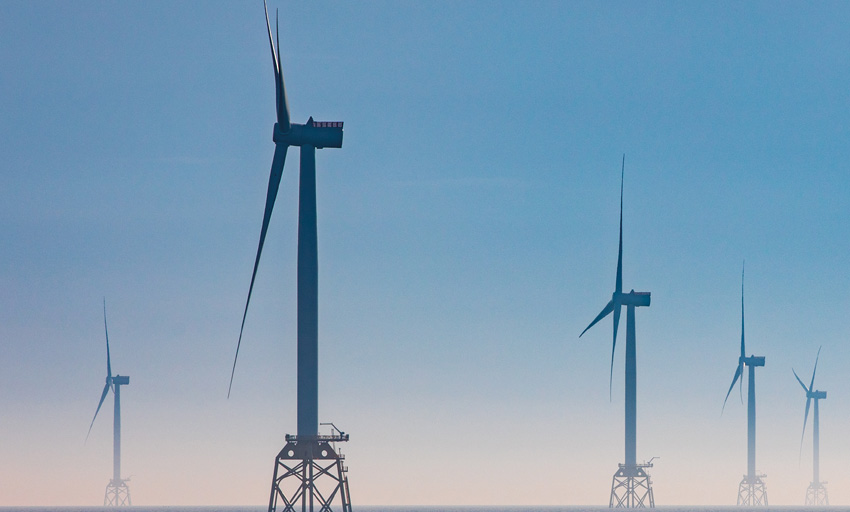The road forward for hydrogen in Ireland

 Ireland is on the path to net zero. The Climate Action and Low Carbon Development Act of 2021 sets out that the country must reach net zero emissions no later than 2050, with a 51 per cent reduction in emissions by 2030. To reach this target, it is clear that the electricity sector is going to have to do the heavy lifting, with Ireland’s wind power potential an area of strength.
Ireland is on the path to net zero. The Climate Action and Low Carbon Development Act of 2021 sets out that the country must reach net zero emissions no later than 2050, with a 51 per cent reduction in emissions by 2030. To reach this target, it is clear that the electricity sector is going to have to do the heavy lifting, with Ireland’s wind power potential an area of strength.
When it comes to developing this renewables-led future, SSE Renewables, Ireland’s largest operator of wind power, continues to lead the way. The company has an ambitious Irish offshore pipeline of up to 4GW, which includes the country’s most advanced offshore project Arklow Bank Wind Park Two off the coast of Wicklow, and the Celtic Sea Array and Setanta Wind Park projects which are located off Ireland’s south and north-east coasts respectively. In the last few weeks, SSE Renewables also announced it is seeking an investigative foreshore licence to facilitate survey work for a possible new offshore wind farm in the Atlantic Ocean off the coast of Tarbert, County Kerry. The wind farm could generate up to 1GW of clean, renewable energy and marks SSE’s first licence application for an offshore wind project off the west coast of Ireland.
Looking beyond wind power, it is clear that other clean solutions are going to be required, not only for the generation of electricity but for other hard to decarbonise parts of the economy. For Oonagh O’Grady. SSE Renewables’ Director of Power to X, this underlines the need for us to investigate how we can use our expansive renewable energy in other ways. This includes the potential for Power to X – using electricity to create other forms of energy such as hydrogen gas or its derivate fuels and e-heat solutions. This type of technology has the potential to complement the electrification-led decarbonisation of Ireland while maximising the use of our greatest natural occurring resource, renewable energy.
“Hydrogen could be utilised in power stations, heavy goods vehicles, and, in the longer term, aviation and shipping. This will deliver greater flexibility to a future energy system that has an even greater penetration of renewable generation.”
Oonagh O’Grady, SSE Renewables’ Director of Power to X

As O’Grady outlines: “We now need to investigate how hydrogen and other Power to X solutions can play a part, and what is needed to deliver these technologies both from a technical, business model and market design perspective”.
The potential for hydrogen in Ireland is an area of increased interest across the industry. As O’Grady explains: “The focus for offshore wind is, correctly, how it can deliver Ireland’s energy security and independence. Beyond that, Ireland’s significant and plentiful homegrown renewable energy potential could be used in other ways. We can use surplus wind production as a feedstock to create green hydrogen through the process of electrolysis. This could be used as a low carbon replacement for fossil fuels like diesel and natural gas. This hydrogen could be utilised in power stations, heavy goods vehicles, and, in the longer term, aviation and shipping. This will deliver greater flexibility to a future energy system that has an even greater penetration of renewable generation.”

feedstock to create green hydrogen to replace fossil fuels like diesel and natural gas.
To support this goal, SSE Renewables is developing the Galway Hydrogen Hub (GH2) project, as part of a seven member consortium. GH2 will position Galway as the home of Ireland’s first hydrogen valley, providing green hydrogen for use in transport, industry, and within local communities in the greater Galway region. The GH2
consortium’s intention is to develop a flagship pathfinder project at The Port of Galway, for the indigenous production and local supply of clean green hydrogen fuel for public and private vehicles.
“Not only does hydrogen present an opportunity to utilise our offshore wind potential, it also provides a pathway to reduce Ireland’s reliance on imported fossil fuels thereby enhancing security of supply. It is a low-carbon solution, tailor-made for flexible generation.”
Peter Cunningham, SSE Thermal’s Head of New Ventures
O’Grady adds: “The opportunity could go beyond just domestic. Ireland has one of Europe’s best offshore wind resources which could potentially be used to provide Europe with energy – whether that be in the form of electricity or as green hydrogen. For green hydrogen exports, business models, full value chain economics, and transmission solutions will determine the scale of this opportunity.”
Decarbonising flexible generation
When the wind does not blow and the sun does not shine, Ireland will need a low-carbon flexible back-up. Future power stations have the potential to be powered by green hydrogen. For its part, SSE is taking the bull by the horns and placing low-carbon projects at the top of its strategic agenda.
As Peter Cunningham, SSE Thermal’s Head of New Ventures, outlines: “Our vision is ambitious but simple: To be the leading provider of low-carbon flexible energy in a net zero world. That means managing our business to help keep the lights on today while transforming our business to provide that same flexibility without emitting carbon in the future.”
SSE owns and operates four thermal power stations in Ireland, including sites at Tarbert on the Shannon Estuary in County Kerry, Rhode in County Offaly and Tawnaghmore, south of Killala in County Mayo. Rounding out the quartet is Great Island, the newest CCGT in Ireland and one of the most-efficient power stations on the island, generating enough electricity to power half-a-million Irish homes.
Just as Great Island represented a step change from the previous generation of power stations when it opened seven years ago, so too will the next generation of thermal plants. The sector has already seen a major shift in how these stations operate. Where once they ran almost constantly, now they are more flexible in nature, responding to variations in demand and intermittent renewables supply whilst providing additional system stability services.
SSE Thermal is already bringing forward the next generation of lower-carbon power stations, with two plants in development at Tarbert and Platin which would initially run on biofuels with the potential to convert to hydrogen in the future. In April, SSE won 10-year capacity agreements at each site, highlighting the role it can play in Ireland’s future energy system.
As Cunningham outlines: “Not only does hydrogen present an opportunity to utilise our offshore wind potential, it also provides a pathway to reduce Ireland’s reliance on imported fossil fuels thereby enhancing security of supply. It is a low-carbon solution tailor-made for flexible generation. It can replace fossil fuels in thermal generation, with 100 per cent hydrogen-fuelled plants producing zero carbon emissions at the point of combustion.”
SSE Thermal is embarking on several low-carbon flexible projects in the UK including in the north-east of England where they are developing plans for one of the world’s first major 100 per cent-hydrogen-fuelled power stations, with a peak demand of 1,800MW of hydrogen.
SSE Thermal is also developing what could be one of the world’s largest hydrogen storage facilities, with an initial expected capacity of 320GWh – enough to power 860 hydrogen buses for one year. They also have plans to decarbonise a gas-powered unit by blending hydrogen.
As Cunningham says: “The experience we are gaining through these diverse projects will undoubtedly stand us in good stead when it comes to delivering the right low-carbon solutions for Ireland, and there is no reason why Ireland cannot be a leader in hydrogen.”
Ireland’s hydrogen strategy
With the Government due to publish Ireland’s first hydrogen strategy later in the year, Oonagh O’Grady believes this will be a critical first step in establishing the role hydrogen will play in Ireland’s energy system and Ireland’s role in the wider hydrogen market.
“Hydrogen undoubtably has as a potential role in our energy system, but we now require the Government to define what its ambitions are and where it would like to see hydrogen being used.”
She adds: “Fundamental to the success of hydrogen in Ireland is the need to identify the optimal usages and develop effective incentives for the use of hydrogen, along with the enabling infrastructure required to link production with demand. We need to clearly define the intended uses for hydrogen in Ireland, including our export ambition and how Ireland can be competitive versus other countries.”
W: www.sserenewables.com
W: www.ssethermal.com






